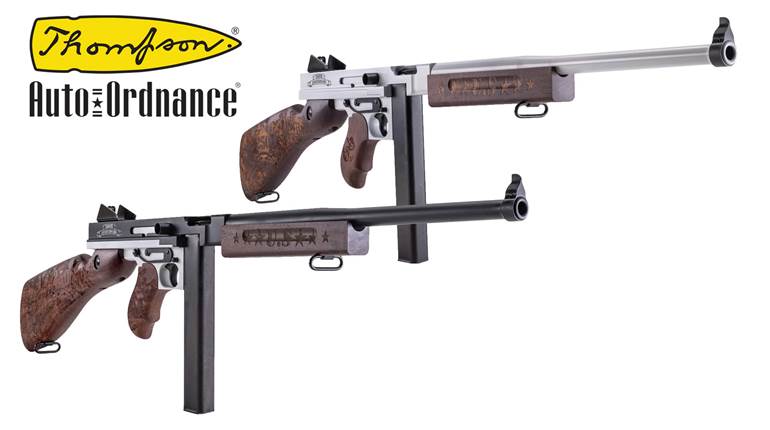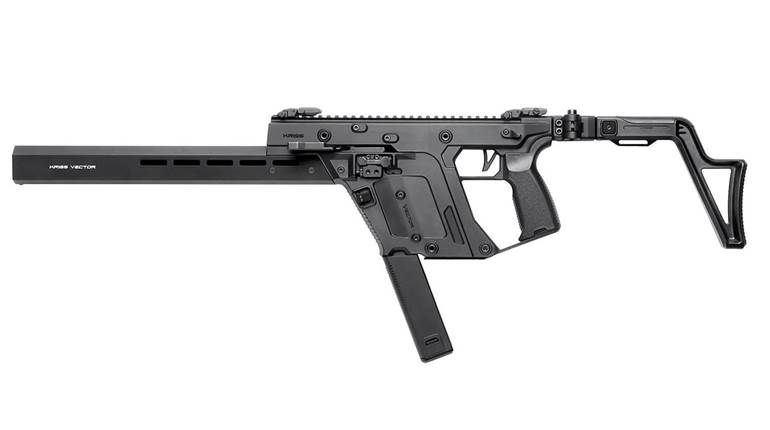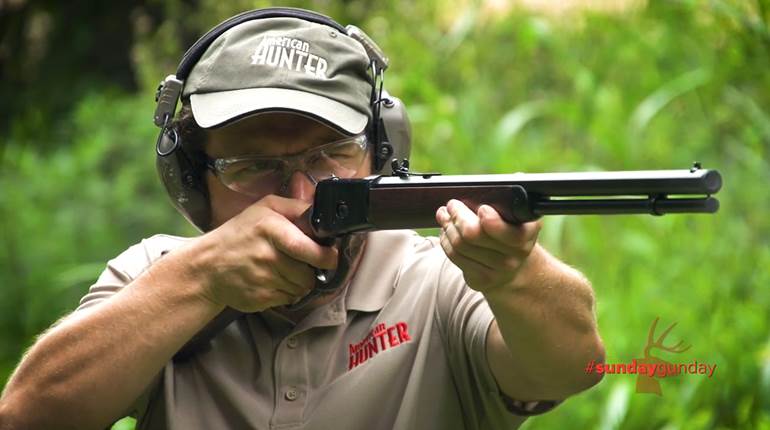
U. S. Marine Lt. Col. John Dean “Jeff” Cooper (May 10, 1920 - Sept. 25, 2006) is legendary. His wisdom and experience transformed the shooting world into what we know today. He developed and taught the “modern technique” of combat shooting that pervaded military, police and civilian training. He founded the American Pistol Institute in 1976, which was later named Gunsite Academy, a premier gun training facility. He was the president and founding father of IPSC, the modern international practical shooting sport in 1976, as well. He wrote books and articles on shooting and hunting. In 2001, he was awarded a lifetime appointment to the National Rifle Association’s Executive Council. He did it all.
Cooper was well known for promoting the M1911 pistol and the big-bore .45 ACP cartridge. Together, they made for a formidable firearm–powerful, accurate, effective. In spite of his devotion to the .45 ACP, Cooper also had interest in other pistol rounds, notably the 10 mm Auto, which he is credited for creating, and the .38 Super.
The .38 Super fit perfectly with the M1911 pistol, a relationship that began in the December 1928 issue of American Rifleman, when Colt announced the Super .38 pistol. It was Colt’s Government Model (1911) pistol rechambered to .38 Automatic, the parent cartridge of the .38 Super. Cooper described his work with the .38 Super in the December 1973 issue of Guns And Ammo.
Cooper was hot-rodding the .38 Super to see if its performance could be ‘magnumized’. His pistol was an alloy-framed Colt Commander, with a long Bar-Sto barrel that measured just under 6.5". The long barrel added significant speed to factory ammunition. Copper claims that factory 130 grain bullets were clocking at 1,350 f.p.s. Around that time, Remington and Winchester loads were advertised at 1,280 f.p.s. from a 5" barrel. Today’s factory 130 grain ammo has an advertised speed of 1,215 f.p.s.
John Adams, Executive Director of the Southwest Pistol League at the time, took over developing handloads with .38 Super cases. John got to 1,750 f.p.s. with 90 grain Sierra bullets, and 1,600 f.p.s. with 125 grain Speer bullets before the cases started to blowout. The Bar-Sto barrel was not ramped but was throated as little as possible to provide as much case support as possible.
Charges for the 90-grain bullet were 8 grains of Unique and 15 grains of Winchester 630 for the 125-grain bullet. The 630 has been discontinued, but it is a slow powder with a burning rate similar to Accurate #9 (Western Powders burn rate chart version 3.4). An old Speer loading manual (#10, circa 1980) shows a maximum load of 11.6 grains of 630 with a 125-grain bullet in the .38 Super. That should give you an idea of just how overcharged Cooper’s loads were. It’s no wonder they were blowing cases.
Cooper wanted more performance, but .38 Super cases were limited in what pressure they could withstand. They are designed for the .38 Super’s maximum pressure limit of 36,500 psi. What to do? Whit Collins, editor of the 1974 Guns and Ammo Annual, suggested they try cutting down .223 Rem. brass. This rifle cartridge has a pressure limit of 55,000 p.s.i., though it was not intended to be fired in a chamber without full support.
The .223 Rem. cases have a thicker case wall near the head than the common .38 Super case. This adds valuable strength where the case is not supported in the chamber because of the cutout for the feed ramp. The .223 Rem. is rimless, whereas the .38 Super is semi-rimmed. The semi-rim was designed to headspace the cartridge, but rimless .223 Rem. cases were not a problem because Cooper’s barrel headspaced on the case mouth instead of the semi-rim.

Switching to cut-down .223 Remington brass stopped the blowouts. Cooper says they now approached 1,750 f.p.s. with 125-grain bullets, and 2,000 f.p.s. with 90-grain bullets. That’s impressive performance, indeed! As this was a ‘new’ cartridge with its own ballistic performance, Jeff dubbed it the "Super Nine," but many of us remember it as the ‘Super Cooper’.
Cooper does not indicate what powders or charge weights were used for these new speeds, for example, whether they still used Unique for the 90-grain bullets and 630 for the 125-grain bullets. But since they were now using a case with much smaller capacity, they might not have needed to change their charge weights by much. I used QuickLOAD ballistic software to estimate velocity when simply changing to a smaller case volume, using 17.6-grains of water volume for the 38 Super (the default value in QuickLOAD), and 14.4 grains of water volume for the cut-down .223 Rem. case (my measurement).
I used 12 grains of Accurate #9 as the charge weight and a 125-grain bullet for the calculations, as this is the maximum charge Speer’s manual #14 uses for their 124- and 125-grain bullets in .38 Super. QuickLOAD estimated a velocity increase in a 6.5" barrel from 1,473 f.p.s. to 1,701 f.p.s., a difference of 228 f.p.s. However, the smaller case volume also means it won’t hold as much powder. Powder density can be a limiting factor, and 15 grains of 630 might or might not have fit in the .223 Rem. cases. Without specifying the details of his loads in the .223 Rem. case, we simply don’t know.
The 6.5" barrel certainly helped to increase velocity, but 1,750 f.p.s. with 125-grain bullets is pushing the limits from a straight-walled 9 mm or .38-cal. cartridge of this length (the .38 Super has a maximum overall length of 1.280"). This sounds more like what one might get with a 9x25 mm Dillon, a bottlenecked 9 mm round made from a 10 mm case. The 9x25 mm Dillon has a 125-grain bullet traveling at 1,700 f.p.s. from a 6" barrel. It has a maximum pressure limit of 37,500 p.s.i. (36,259 p.s.i. according to QuickLOAD software). It has about 30 percent more internal case capacity than a .38 Super, allowing it to produce high speeds with less pressure than a souped-up Super.
I was intrigued by the Super Cooper and wondered how feasible it was to get these speeds from the .38 Super. I’m no stranger to pushing the .38 Super hard, because I loaded this round to Major power factor for IPSC/USPSA competition, which often resulted in pressures past the SAAMI limit. Many competitors have done this, and the .38 Super can be pushed safely in the right gun with the right selection of components.
In the past, the required power factor for Major scoring was 175 (bullet weight times velocity divided by 1,000), and it was not unusual for folks to load to 180 power factor, or thereabouts, to have a margin of error to ensure their load would qualify for Major scoring. (USPSA Major power factor today is 165.) But Cooper’s load of a 125-grain bullet at 1,750 f.p.s. is a 219 power factor. Anyone who has loaded the .38 Super to high speed will tell you this is pushing the limits of the cartridge into a scary place, even when that speed is achieved from the extra length of a 6.5" barrel.
Let’s talk about pressure. Case capacity is an important variable in peak chamber pressure. Smaller case capacity requires higher pressure to push the same bullet to the same speed with the same powder. The .223 Rem. case is smaller diameter (0.376") than a .38 Super (0.384"), so the powder chamber is smaller. Add to that the thicker case walls of the .223 Rem. cases and when cut down, they have significantly less capacity than the .38 Super.
My sample of a Remington .38 Super case holds 17.7 grains of water, and a Winchester case holds 17.1 grains. A Federal .223 Rem. case cutoff to .38 Super length holds 14.4 grains. The Remington .38 Super case holds 23 percent more water than the cutoff .223 Rem. case. To help put this in perspective, some brands of 9 mm Luger cases hold 13.8 grains of water. Thus, the cutoff .223 Rem. cases hold only 4 percent more water than the much shorter 9 mm cases. Cooper and his colleagues had tremendous courage to be able to get Super Cooper performance from cut-off .223 Rem. cases.

I did not use cut-off .223 Rem. brass. Their small case volume would raise pressure more than I was comfortable with for this project. While the goal was to duplicate his speeds, I wanted to keep pressure as low as possible in order to minimize risk. I had more choices than Cooper did back then, and I took advantage of them.
I used 9x23 mm Winchester cases. The 9x23 mm case is the same length as a .38 Super case (0.900"), so they are, for this purpose, essentially the same thing. The physical difference between the two cartridges is that the .38 Super is straight-walled cylindrical and the 9x23 mm is tapered like a 9 mm Luger.
I selected the 9x23 mm because I had a 6" Lone Wolf barrel chambered in 9x23 mm. It was originally a conversion barrel chambered in 9 mm Luger for a Glock 20 10 mm pistol. I rechambered it in 9x23 mm Winchester for a previous project, so I was all set to take on the Super Cooper project.

I used Starline 9x23 mm Comp cases, Starline’s version of the 9x23 mm Winchester. They are the same externally, but the Starline cases have thinner walls than the original Winchester brass so they have more internal space. Starline’s 9x23 mm Comp hold 17.4 grains of water, which is middle of the road for .38 Super cases, and 21 percent more than a cut-off .223 Rem. case. Winchester’s 9x23 mm brass holds 15.7 grains of water, just 9 percent more than a cutoff .223 Rem. case. The Starline’s greater capacity will help keep pressure low.
Starline’s 9x23 mm Comp brass is not as strong as Winchester’s 9x23 mm brass and will not withstand as much pressure as the Winchester brass in an unsupported chamber. However, the Lone Wolf barrel is ramped and has very good case support, and I inspected every round fired for excessive bulging in the small unsupported region as part of my safety protocol.

Cooper does not give exact velocities with the .223 Rem. brass, but says they could “creep up on” 2,000 f.p.s. with 90-grain bullets and 1,750 f.p.s. with 125-grain bullets. Does this mean 90-grain bullets were going 1,950 f.p.s.? 1,960 f.p.s.? 1,999 f.p.s.? Who knows? For the sake of simplicity, I used 2,000 f.p.s. and 1,750 f.p.s. for 90- and 125-grain bullets, respectively, as benchmark speeds.
My 6" barrel won’t produce as much speed as a 6.5" barrel with the same ammo. To estimate the velocity loss, I used chronograph data from my .38 Super Lone Wolf barrel, firing the same ammo when it was 6" long and after it was cut down to 4.6". The average velocity lost with eight different loads was 73 f.p.s., or about 26 f.p.s. for a 0.5". Therefore, my target speed for my 6" barrel was 1,974 f.p.s. for 90-grain bullets and 1,724 f.p.s. for 124-grain bullets. I used 124-grain bullets instead of Cooper’s 125 grain weight. One grain difference in bullet weight won’t make any practical difference.
Test bullets were 90-grain Sierra JHP and Hornady 124-grain FMJ flat point (discontinued by Hornady). Both bullets are short for their weight, and were selected for that reason to help keep pressure low. Longer bullets, even when the same weight, when seated to the same overall length, sit deeper in the case and increase pressure. The 90-grain bullets were loaded to 1.2" and the 124-grain bullets to 1.26" overall length.

Several gunpowders were employed: Ramshot Silhouette, Ramshot Enforcer, Alliant Power Pistol, Accurate #7, Accurate #9, Hodgdon Lil’ Gun, Vihtavuori 3N38 and Vihtavuori N105. In anticipation of rifle-like pressure, Federal small rifle primers (No. 205) were used. Ten rounds were loaded with each charge weight.
Loads were worked up carefully while watching closely for pressure signs, which include excessive case bulge in the region that is not supported by the chamber. Excessive bulging here is evident as an imprint of the feed ramp in the brass. This is where cases blowout when pressure is too high. Other excess pressure signs are pierced primers, primers blown out of the case and cases stuck in the chamber. Primers were watched for flattening, though this has limited use since flattened primers can also be due to excessive headspace and other issues.
Testing loads was nerve-racking, as I was well past published load data and even past load weights used for making Major power factor with these powders. I experienced several instances of excess pressure during load development. Any one example of this compelled me to stop development with that powder.
Cases were measured for expansion above the extractor groove where they are not supported by the chamber. This is a method to monitor increasing pressure and can serve to compare the relative expansion by different gunpowders. More case expansion should reflect higher pressure. I was able to reach the target velocities with some powders without showing signs of excessive pressure by my criteria. To be clear, I don’t know what the pressures were, but the fired cases fit within my specified safety limits.
Sierra 90 grain bullets exceeded 2,000 f.p.s. powered by Ramshot Silhouette and Accurate #7. Average speed with Silhouette was 2,013 f.p.s., and Accurate #7 loads reached 2,027 f.p.s. Two powders worked effectively with 124 grain bullets. Accurate #9 reached 1,725 f.p.s., and N105 reached 1,724 f.p.s. Powder weights are shown in the table.

Speed is not the only impressive achievement. Calculated muzzle energy shows the force these high speed bullets deliver. A 90-grain bullet at 2,027 f.p.s. produces 821 ft.-lbs. of muzzle energy, and a 124-grain bullet at 1,725 f.p.s. produces 819 ft.-lbs. of muzzle energy. That’s more energy than the 10 mm Auto produces.
Few powders are good candidates for these extreme loads. There is a tradeoff between powder burn rate, bulk density and case capacity. Slow powders are desirable since they can usually offer the highest speed at the lowest pressure, but they often require more weight than faster powders, and this fills more of the case. Indeed, most slower powders were compressed, and there came a point with some powders when no more could be added. For example, N105 was able to reach the target speed with 12 grains of powder with the 124-grain bullet, but that was all that would fit in the case, and case expansion was right at the limit before I started to see an imprint of the feed ramp.
I was curious how much pressure might increase with using the smaller .223 Rem. cases. I used QuickLOAD to estimate the pressure of my loads in 9x23 mm Comp cases, then see how much it would increase to achieve the same speed with the smaller volume .223 Rem. cases. The powder charge weights were significantly reduced because of the reduced volume, but even with that the numbers suggested a pressure increase of around 20 percent or more.
I have to disagree with Cooper on one point. He writes that the Super Cooper’s recoil is less noticeable than that of a standard .45 ACP. If you do the math, the Super Cooper has substantially more recoil than a .45 ACP and nearly the same recoil as a full power 10 mm Auto. The Accurate #9 load with the 124-grain bullet at 1,725 f.p.s. produces 9.93 ft.-lbs. of recoil in a 2.02 lbs. gun (unloaded G20 with the 6" barrel).
A 10 mm 180-grain bullet loaded with 11.0 grains of Blue Dot travels at 1,295 f.p.s. (from a 5” barrel) and produces 10.17 ft.-lbs. of recoil in the same weight gun. For comparison, a .45 ACP 230-grain bullet powered by 9.0 grains of Blue Dot traveling at 893 f.p.s. produces only 7.42 ft.-lbs. of recoil in the same weight gun. (10 mm Auto and .45 ACP load data are the fastest loads for those bullets weights in the Speer Reloading Manual #14.) The bottom line is that the Super Cooper kicks pretty hard. Performance has a price!
Discussion:
The Super Cooper never made it past the experimental stage, that I’m aware of. A modern-day version of the Super Cooper is the 9x23 mm Winchester. It was introduced by Winchester in 1996, based on a case designed by John Ricco. It has a very high pressure limit (55,000 p.s.i.) and drives a 124-grain bullet to 1,480 f.p.s. from a 5" barrel. Factory Winchester 9x23 mm 124-grain JSP ammo clocked at 1,602 f.p.s. from the 6" Lone Wolf barrel.
Those numbers are a bit shy of the speeds produced by a Super Cooper in the same barrel, but it’s still a potent cartridge and an excellent choice for people who want maximum performance from a semiautomatic round. If you must have Super Cooper performance, there is the 9x25 mm Dillon, mentioned previously. It delivers Super Cooper speed at reasonable pressures. However, it requires a .40-cal. or 10 mm breech face, since it is a necked down 10 mm Auto case.
Results of these tests fall into the category of “Do not try this at home.” There is no margin for error at these pressures, and not all guns are capable of handling this pressure and recoil and will be damaged or destroyed, and the shooter can be very seriously injured. If you want this type of performance from a mid-caliber round in a semiautomatic pistol, choose the alternatives loaded to known, safe pressures, such as the 9x23 mm Winchester, 9x25 mm Dillon and .357 Mag.
The author strongly warns against using any of this data in handload development. Only use data from resources that provide pressure-tested load data and within SAAMI specifications. The author is not responsible for mishaps of any kind that might occur from the use of this data. It is the user’s responsibility to follow safe handloading guidelines to develop safe ammunition. No responsibility for the use or safety in use of this data is assumed or implied.





































